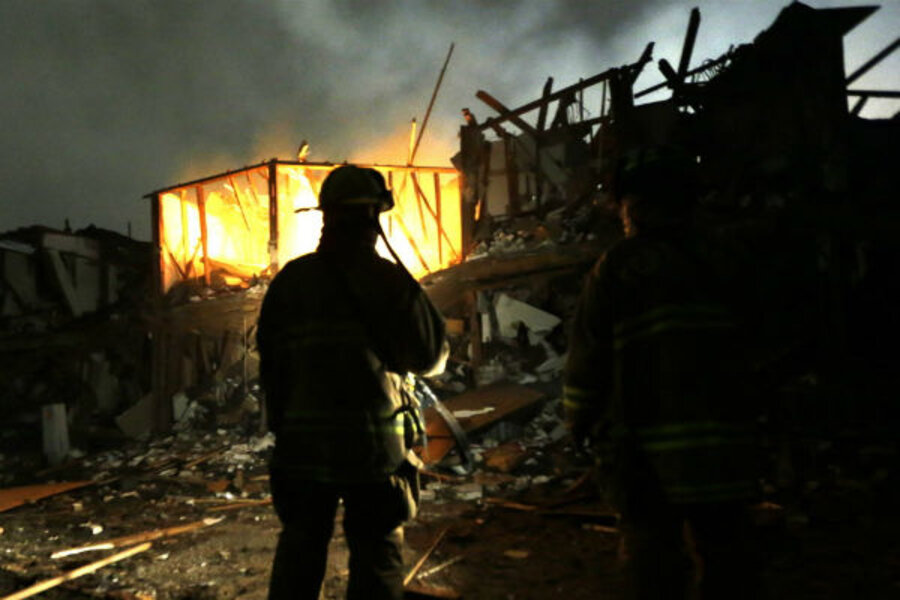Texas fertilizer plant tragedy: Fallen firefighters 'showed their dedication'
Loading...
| West, Texas
With missing teeth and an arm in a sling, one of the few remaining members of the West Volunteer Fire Department paced around the fire station Friday. He barked orders to the few people there – to clean equipment, install new gear from neighboring towns, and organize supplies.
It was an effort to restore a sense of order two days after a massive fertilizer plant explosion killed or seriously injured 22 first responders alone in West, Texas – a town of 2,800 that's still made up largely of Czech immigrants.
Authorities on Friday confirmed 12 dead in all, including 10 first responders. Most of the surviving volunteer firefighters remained in area hospitals, many with serious injuries resulting from a massive blast that some here likened to "a nuclear bomb."
Among the volunteer firefighters lost were a pair of Czech-American brothers, Doug and Robert Snokhous; the city's secretary, Joey Pustejovsky; and Jerry Chapman, a goateed individual who was taking an EMT class when the call came about the fertilizer plant.
The department also lost three trucks in the explosion, pretty much the entire inventory of large equipment. Firefighters from other towns washed the department's sole remaining piece, a small pickup truck tanker, on Friday. The department was manned largely by firefighters from other towns, who are now loaning their pumpers as well as hook and ladder trucks.
The survivors are "numb right now," says Roger Wilson, a police chaplain who served after the Oklahoma City bombing and the 9/11 attacks and who is now responding to the West aftermath.
Seventy-seven percent of Texas firefighters are volunteer, and they're a tightknit community – usually including pillars of the community and known as stalwarts of response. The vast majority of volunteer firefighters are certified, according to the State Firemen's & Fire Marshals' Association of Texas.
Most of the dead had responded to a windblown fire at the plant Wednesday night, and many of them were found inside the blown-up plant. So far, no evidence of foul play has emerged in how the fire started in the family-owned plant, which has been a cornerstone of the community for more than 50 years.
"You look at this long list of names who lost their lives, who showed their dedication – they did it for zero pay, just out of the goodness of their hearts, to try to protect lives and property of the local community," says Chris Barron, executive director of the State Firemen's & Fire Marshals' Association of Texas.
It will take years for the fire department to fully rebuild and overcome the anger and sadness resulting from the heavy loss, says Mr. Wilson, the police chaplain. On Friday, none of the remaining volunteer firefighters, including the man with missing teeth and an arm in a sling, felt like talking to the press.
"This is a small town. All these people are connected, and right now, they still can't believe that this happened," Wilson says. "What usually happens in cases like this is these departments lose their top people, because they're the ones who run to the scene."
Firefighters Robert and Doug Snokhous were second cousins of Raymond Snokhouse, the Czech honorary consul for Texas. Burly individuals, they became known as the chief "jaws of life" operators on the squad, and they were always racing to accidents and fires to get there first.
"They were always together in life, and they left this life together," says Mr. Snokhouse, who was accompanied to West on Friday by the Czech ambassador to the United States, Petr Gandalovič. He struck a resolute note, too: "We are survivors who came here to this country, and this is life. It's not what happens to us, but how we handle it. We will overcome this."








